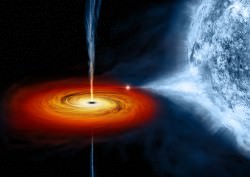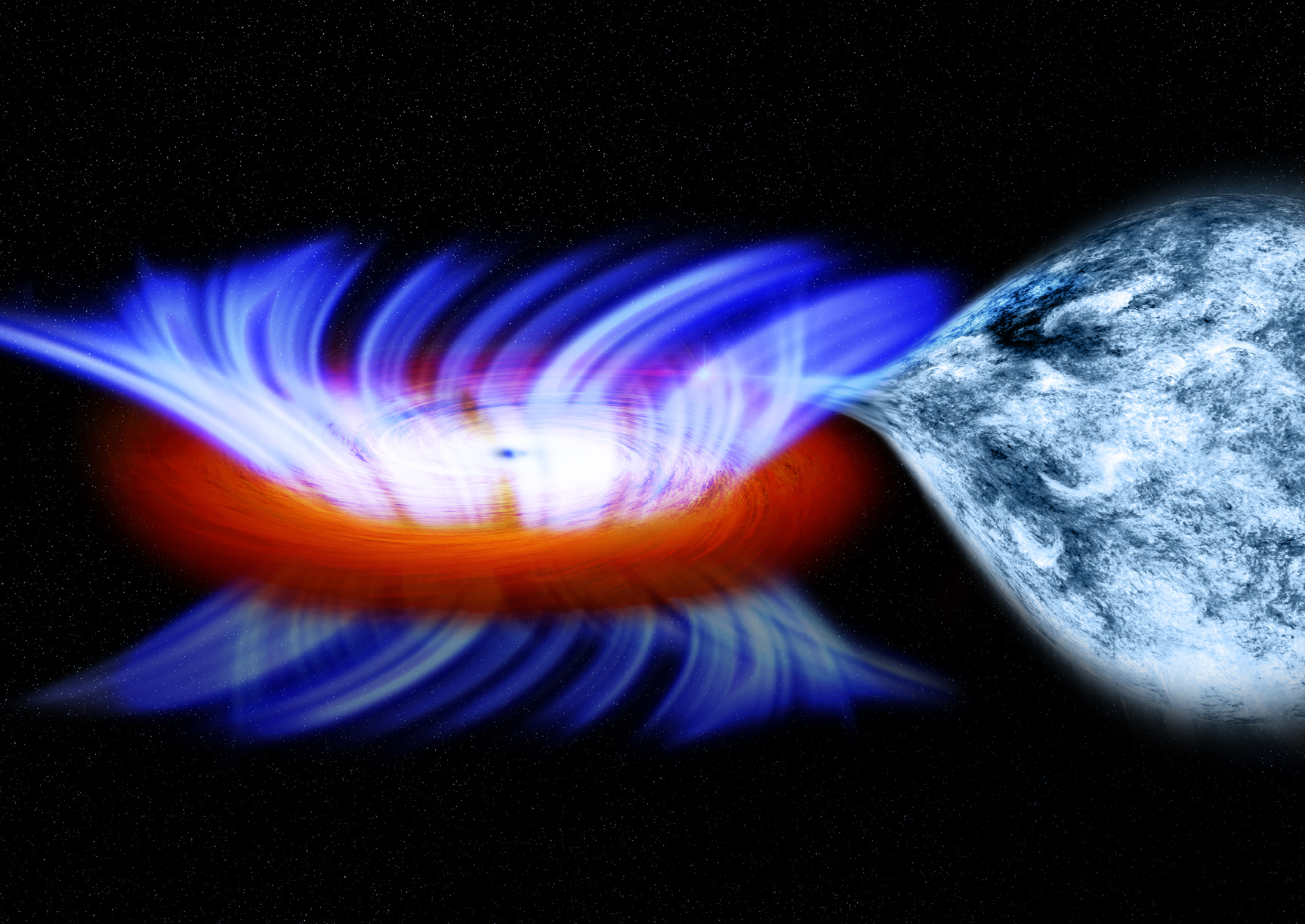[/caption]
Astronomers using NASA’s Chandra X-ray Observatory have reported record-breaking wind speeds coming from a stellar-mass black hole.
The “wind”, a high-speed stream of material that’s being drawn off a star orbiting the black hole and ejected back out into space, has been clocked at a staggering 20 million miles per hour — 3% the speed of light! That’s ten times faster than any such wind ever measured from a black hole of its size!
The black hole, dubbed IGR J17091-3624 (IGR J17091 for short), is located about 28,000 light-years away in the constellation Scorpius. It is part of a binary system, with a Sun-like star in orbit around it.
“This is like the cosmic equivalent of winds from a category five hurricane,” said Ashley King from the University of Michigan, lead author of the study. “We weren’t expecting to see such powerful winds from a black hole like this.”
IGR J17091 exhibits wind speeds akin to black holes many times its mass… such winds have only ever been measured coming from black holes millions or even billions of times more massive.
“It’s a surprise this small black hole is able to muster the wind speeds we typically only see in the giant black holes,” said co-author Jon M. Miller, also from the University of Michigan.

Stellar-mass black holes are formed from the gravitational collapse of stars about 20 to 25 times the mass of our Sun.
“This black hole is performing well above its weight class,” Miller added.
IGR J17091 is also surprising in that it seems to be expelling much more material from its accretion disk than it is capturing. Up to 95% of the disk material is being blown out into space by the high-speed wind which, unlike polar jets associated with black holes, blows in many different directions.
While jets of material have been previously observed in IGR J17091, they have not been seen at the same time as the high-speed winds. This supports the idea that winds can suppress the formation of jets.
Chandra observations made two months ago did not show evidence of the winds, meaning they can apparently turn on and off. The winds are thought to be powered by constant variations in the powerful magnetic fields surrounding the black hole.
The study was published in the Feb. 20 issue of The Astrophysical Journal Letters.
Illustration credit: NASA/CXC/M.Weiss. Source: Chandra Press Room.


Here is the free (PDF) paper: An Extreme X-ray Disk Wind in the Black Hole Candidate IGR J17091-3624.
The dynamics of the accretion disk is not due to any particular property of the black hole. Black holes have only their mass, angular momentum and charge which characterize them. The black hole provides the spacetime configuration, but most of the complexity involved with generating this wind is due to the magnetohydrodynamics around the black hole.
LC
How many other black holes are accreting from a nearby star? I’m wondering how the stellar wind and magnetic field of the star might affect the Eddington limit and change the usual dynamics.
The same black hole was reported some time ago as the smallest know stellar-mass black hole – http://www.sciencedaily.com/releases/2011/12/111215232722.htm
Really, interesting, what dors that mean for us?
Really, interestimg, what does that mean for the scientific community?